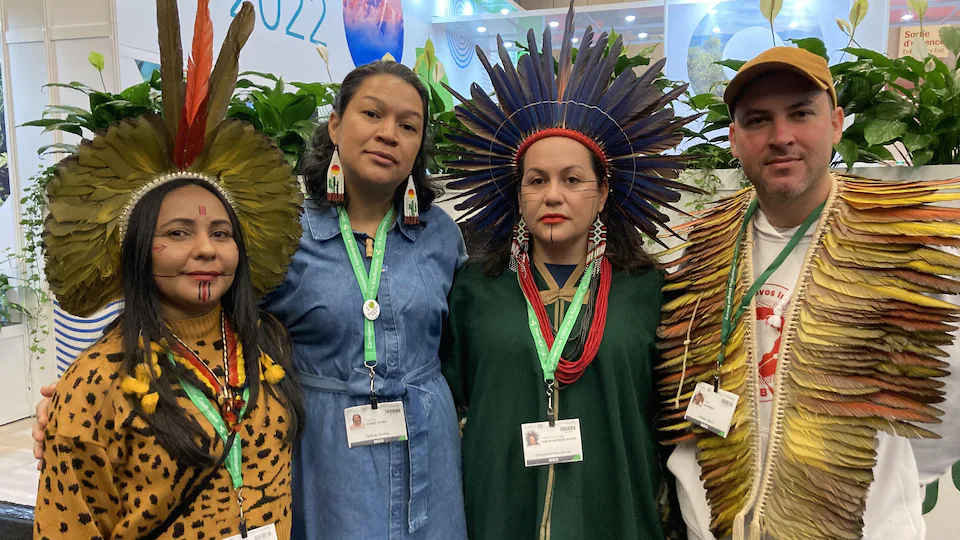Listening to indigenous peoples
More and more indigenous people are participating and appearing at biodiversity conferences. Dressed in their majestic headdresses and traditional dress, they brighten up the meetings. Will they be given a voice?
Change your strategy
In 2010, COP 10 on biodiversity was held in Japan. The strategic plan drawn up and adopted at the time included 20 measures: the Aichi targets. They were to be implemented by the year 2020 to ensure the protection of the ecosystem while contributing to human well-being and reducing poverty. The Aichi Targets consisted of five points :
“Addressing the underlying causes of biodiversity loss”, “reducing direct pressures”, “improving the status of biodiversity”, “enhancing the benefits derived” from biodiversity and “strengthening the implementation” of nature conservation.
With the deadline approaching, COP 15 is reporting on the progress of the past ten years. According to the Global Biodiversity Outlook 5, some progress is emerging, but the targets remain far from expectations. As far as protected areas are concerned, new ones have been created or expanded, but management is proving complicated. In a more important context, the rate of deforestation has only been reduced by one-third. It even seems to be increasing in some regions.

Puyr Tembé, Cris Pankararu, Joziléia Kaingang and Gasparini Kaingang to the COP15
Give indigenous peoples a voice
Thirty years ago, indigenous people could not participate in the Earth Summit in Rio de Janeiro, explains Cris Pankararu, who represents the Articuaçao dos Povos Indigenas do Brasil. In 2022, of the 15,723 people registered for the COP, 497 are representing an indigenous or tribal community. From Congo-Kinshasa to Peru, from Nepal to Sweden, they decided to travel to Canada. They all seem to think that the COP 15 reflection on biodiversity cannot be done without them.
Indigenous peoples are showing their expertise in protecting nature and animals. An article in Current Biology explains that indigenous people use only a quarter of their territory, of which they preserve 80% of their biodiversity. The study claims that these lands are the “healthiest” on our planet. Until now, ecosystem conservation has been carried out using Western methods. According to Lakpa Nuri Sherpa, co-chair of the International Indigenous Forum on Biodiversity (IIFB):
“There are so many good things in traditional indigenous practices that are solutions to the problem we are talking about at the COP.”
For him, we need to change our mindset towards the land and nature. We need to see the land as a “spiritual footprint”. He also demands that governments recognize the knowledge of indigenous peoples.
Sources : Université de Montréal Nouvelles, L’Info Durable, Current Biology, Espaces Autochtones
Credit photo : Alexis Aubin, Maud Cucchi
 High-quality writing is very important to members of the Global Goodness team. But no one’s perfect, so we always use Antidote.
High-quality writing is very important to members of the Global Goodness team. But no one’s perfect, so we always use Antidote.
Encourage us if you like positive stories!





